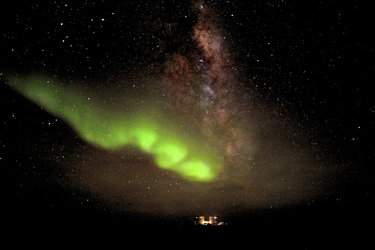Accept all cookies Accept only essential cookies See our Cookie Notice

About ESA
The European Space Agency (ESA) is Europe’s gateway to space. Its mission is to shape the development of Europe’s space capability and ensure that investment in space continues to deliver benefits to the citizens of Europe and the world.
Highlights
ESA - United space in Europe
This is ESA ESA facts Member States & Cooperating States Funding Director General Top management For Member State Delegations European vision European Space Policy ESA & EU Space Councils Responsibility & Sustainability Annual Report Calendar of meetings Corporate newsEstablishments & sites
ESA Headquarters ESA ESTEC ESA ESOC ESA ESRIN ESA EAC ESA ESAC Europe's Spaceport ESA ESEC ESA ECSAT Brussels Office Washington OfficeWorking with ESA
Business with ESA ESA Commercialisation Gateway Law at ESA Careers Cyber resilience at ESA IT at ESA Newsroom Partnerships Merchandising Licence Education Open Space Innovation Platform Integrity and Reporting Administrative Tribunal Health and SafetyMore about ESA
History ESA Historical Archives Exhibitions Publications Art & Culture ESA Merchandise Kids Diversity ESA Brand Centre ESA ChampionsLatest
Space in Member States
Find out more about space activities in our 23 Member States, and understand how ESA works together with their national agencies, institutions and organisations.
Science & Exploration
Exploring our Solar System and unlocking the secrets of the Universe
Go to topicAstronauts
Missions
Juice Euclid Webb Solar Orbiter BepiColombo Gaia ExoMars Cheops Exoplanet missions More missionsActivities
International Space Station Orion service module Gateway Concordia Caves & Pangaea BenefitsLatest
Space Safety
Protecting life and infrastructure on Earth and in orbit
Go to topicAsteroids
Asteroids and Planetary Defence Asteroid danger explained Flyeye telescope: asteroid detection Hera mission: asteroid deflection Near-Earth Object Coordination CentreSpace junk
About space debris Space debris by the numbers Space Environment Report In space refuelling, refurbishing and removingSafety from space
Clean Space ecodesign Zero Debris Technologies Space for Earth Supporting Sustainable DevelopmentLatest
Applications
Using space to benefit citizens and meet future challenges on Earth
Go to topicObserving the Earth
Observing the Earth Future EO Copernicus Meteorology Space for our climate Satellite missionsCommercialisation
ESA Commercialisation Gateway Open Space Innovation Platform Business Incubation ESA Space SolutionsLatest
Enabling & Support
Making space accessible and developing the technologies for the future
Go to topicBuilding missions
Space Engineering and Technology Test centre Laboratories Concurrent Design Facility Preparing for the future Shaping the Future Discovery and Preparation Advanced Concepts TeamSpace transportation
Space Transportation Ariane Vega Space Rider Future space transportation Boost! Europe's Spaceport Launches from Europe's Spaceport from 2012Latest

Antennas and auroras
Thank you for liking
You have already liked this page, you can only like it once!
This photograph, taken a short hike from the Geographic South Pole in Antarctica, shows some of the antennas comprising the Super Dual Auroral Radar Network (SuperDARN) array. They are visible here as the chain of antennas and wiring stretching away into the distance. The red lights along the horizon in the background are lights marking the entrances to the Amundsen-Scott research station, which lies a good kilometre distant.
SuperDARN is a network of radar antennas that monitors and explores the geomagnetic effects occurring in the Earth’s upper atmosphere. While some of these antennas are located at the South Pole, the network stretches worldwide and antennas are found in both the northern and southern hemispheres. One such geomagnetic effect is neatly captured here as wispy curtains and streaks of green filling the dark night sky above the antennas themselves: an aurora.
Auroras, informally known as polar lights, form as charged particles from the Sun flow into our region of space, hit the outer boundary of Earth’s magnetic field, and move further inwards to collide with the atoms and molecules in our planet’s atmosphere. The aurora seen here is known as aurora australis, or the southern lights.
Such phenomena form a key component of ‘space weather’, dynamic changes in the Earth’s cosmic environment that are driven by the activity of the Sun. As these can affect the function of both space-borne and ground-based systems and services, it’s crucial to monitor space weather in order to predict and mitigate its adverse effects. ESA does so via the Space Situational Awareness Space Weather Segment, and various science missions such as Cluster and Swarm, along with dedicated Sun-watching satellites to better understand our nearest star as a complete system.
This image was taken by ESA research fellow Daniel Michalik, who wintered at the Amundsen–Scott South Pole Station in Antarctica in 2017. It was taken as a single long exposure with minor contrast and exposure adjustments. At extremely cold temperatures of -60°C, Daniel was required to layer up, use a hot water bottle to keep the camera warm, and to pack his pockets with plentiful spare batteries. The photographer’s stoicism paid off, as the image was shortlisted as a finalist in the Royal Society photography competition in 2017. Another of Daniel’s images, published here, was the overall winner of the ‘Astronomy’ category.
Between 3 and 5 March ESA is highlighting the effects of space weather with the #AuroraHunters SocialSpace event at the other 'end' of the planet, in Tromsø, Norway. Follow the conversation on Twitter to see more great aurora images!
-
CREDIT
D. Michalik/NSF/SPT -
LICENCE
ESA Standard Licence

Aurora borealis over a satellite ground antenna in Finland

Aurora over Norway

Spotlight on Antarctica

Hubble sees aurora on Saturn















 Germany
Germany
 Austria
Austria
 Belgium
Belgium
 Denmark
Denmark
 Spain
Spain
 Estonia
Estonia
 Finland
Finland
 France
France
 Greece
Greece
 Hungary
Hungary
 Ireland
Ireland
 Italy
Italy
 Luxembourg
Luxembourg
 Norway
Norway
 The Netherlands
The Netherlands
 Poland
Poland
 Portugal
Portugal
 Czechia
Czechia
 Romania
Romania
 United Kingdom
United Kingdom
 Slovenia
Slovenia
 Sweden
Sweden
 Switzerland
Switzerland
























